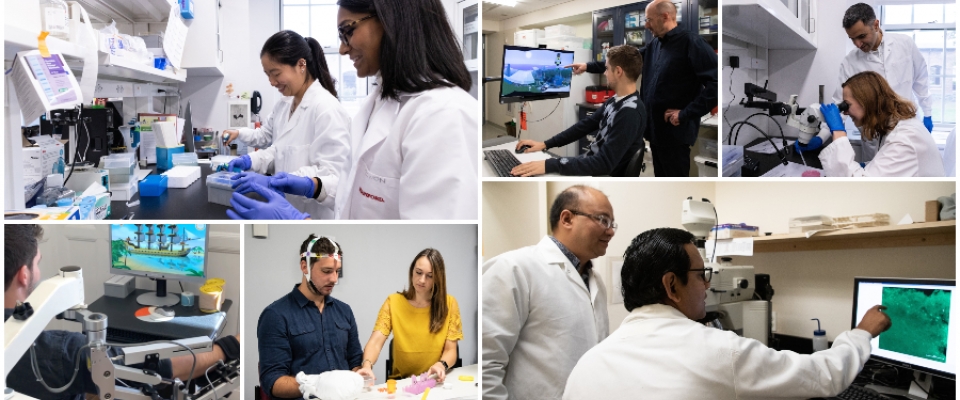You are here

A Spectrum of Stroke Research
At the Burke Neurological Institute, we are devoted to the study of stroke. From laboratory investigations to clinical research and beyond, neuroscientists are focused on advancing prevention, medical treatments, state-of-the-art rehabilitation therapies, and wellness strategies for stroke. We are carrying on with our mission to push the boundaries of stroke research. While the Institute’s research teams have been away from the Institute during the pandemic, they have been actively working on publishing papers and developing new ideas for future investigations and applying for grants focusing on stroke.
CHO LAB
Throughout this time, Dr. Sunghee Cho, director of the Preclinical Stroke Modeling Laboratory, aims to answer key questions with regards to acute and long-term stroke pathology and recovery. Cho Lab recently published a paper investigating the role of an innate immune receptor (CD36) in long-term cognitive and neuropsychological recovery post-stroke. Her team finalized a study assessing and characterizing the movement of immune cells into the brain at various time points after stroke. Members are also preparing manuscript on the repurposing of Aflibercept, a drug used to treat colorectal cancer and macular degeneration, in brain swelling, which is particularly severe in obese individuals who have strokes. Efforts are also being made on new grants for study muscle loss, immune based nutrition after stroke, and genetic factors that predispose to the development of post-stroke depression.
CAVE LAB
Meanwhile, working in collaboration with Cho Lab, Dr. John Cave, director of the Laboratory for Neuronal Specifications, has been pursuing to identify the molecular mechanisms that directs the response of astrocytes following stroke. Astrocytes are essential glial cells in the brain and central nervous system that regulate the transmission of electrical impulses and they have a critical role in limiting damage to the brain following stroke. Dr. Cave, says “Our collaborative work has identified the Zeb2 gene as a key regulator of astrocytes after injury. Identifying this role for Zeb2 indicates that molecular mechanisms that direct the astrocyte response to injury have important similarities to those found in wound healing processes for non-neural tissue as well as to those that impact the progression of cancer.” This better understanding of the molecular mechanisms in astrocytes provides a foundation for exploring how approaches that have been designed to manipulate either wound healing or cancer can be also applied to the protection and recovery of neurological function after stroke.
KITAGO LAB
Concurrently, projects aiming to better understand and enhance motor recovery from stroke are being explored the Human Motor Recovery Laboratory led by Dr. Tomoko Kitago. One key project involves using a non-invasive method called Paired Associative Stimulation to characterize brain plasticity in stroke patients and studying the impact of selective serotonin reuptake inhibitors on plasticity. The research team has also been developing video-based methods to examine the quality of movements after stroke, enabling the team to objectively measure how movements change in stroke rehabilitative interventions.
As we are carrying on with our mission, we aim to push the boundaries of stroke research. The Institute is staying connected with its goal to restore hope for individuals living with neurological issues caused by stroke through brilliant and compassionate science that leads to life-changing cures for stroke.



